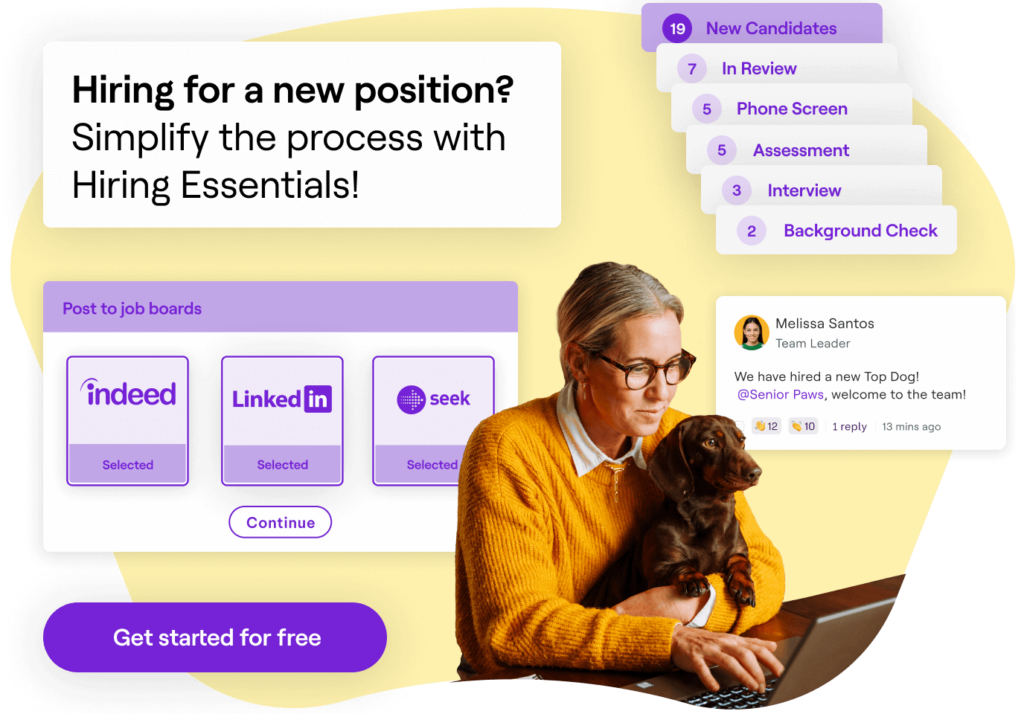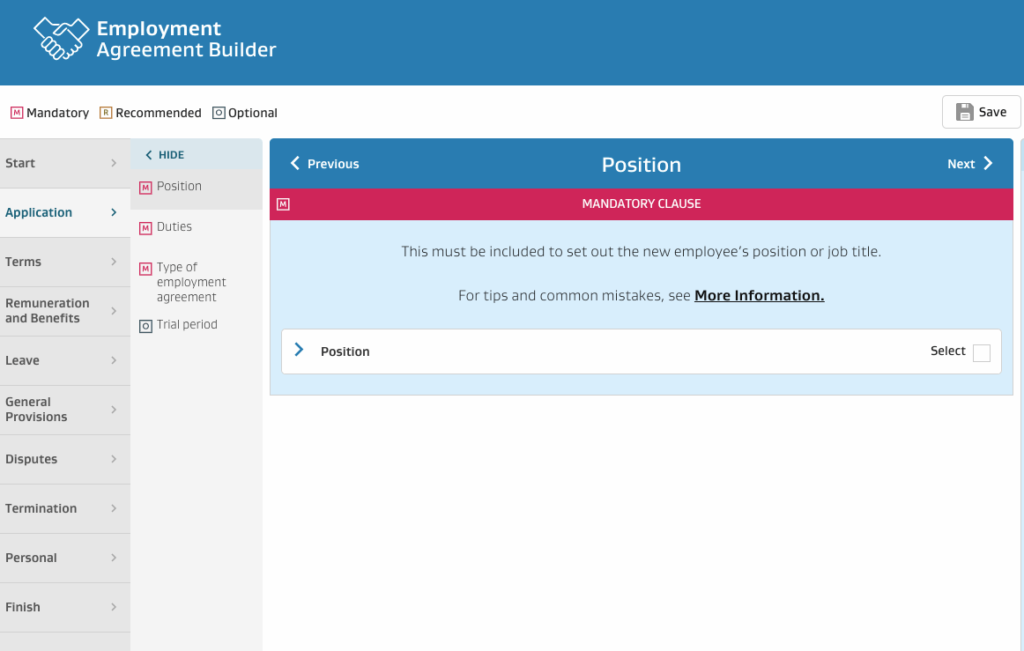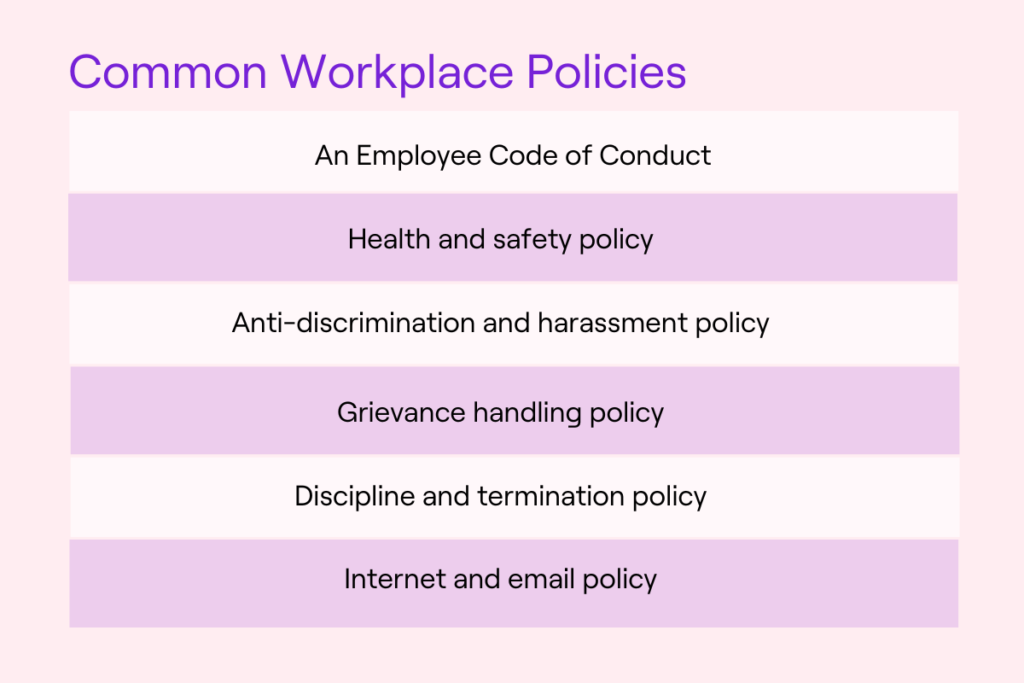
Congratulations! If you’re reading this blog you must be on the verge of hiring your first staff member and writing your own employment contract. Building a team is an exciting step in growing your business so here’s to you!
On the flip side, it can also be a little scary. For instance, there are all the legalities to consider.
Employment shouldn’t be stressful! We want to help you navigate the complexities of hiring. Let’s start with the first formal document you’ll need to draw up; the employment contract.
What are employment contracts?
An employment contract is a legally binding document between employer and employee that lays out the agreed terms and conditions and employment agreements that each party will abide by for the duration of the employment term.
It’s designed to protect you (the employer) and your new employee, ensuring there is no confusion on requirements or remuneration for the job that needs to be completed.

In New Zealand, employment contracts are more generally referred to as employment agreements.
Is a written employment agreement required in New Zealand?
Every employee in New Zealand must have a written employment agreement.

A written agreement helps both the employee and the employer clarify the terms of their employment. When a clear agreement is in place, it provides an easy reference for both parties and leads to fewer misunderstandings when it comes to employment entitlements.
What does at-will employment mean?
Have you heard the term “at will employment” floating around? Maybe you’re wondering if you need to write up “at will employment contracts”? This is a term and concept used in the United States, and is not used in New Zealand.
How should employment contracts be written?
Employment contracts written in plain English help you minimise costly and time-consuming disputes or legal issues by providing certainty about the legal rights and obligations of both you and your staff.

Although you might work with an employment lawyer to help you write an employment contract, the contract itself should ultimately be easy to read and understand.
What type of employment contract do I need?
Just like your employees, every employment contract is unique; a standard employment contract simply doesn’t exist.
This probably isn’t what you want to hear as a busy business owner (sorry!) but tailoring your contract of employment to each new hire is best practice. It’s all about ensuring terms are clear and understood, and risk is minimised for both parties in the employment relationship.
Although every written agreement will be tailored to your new team member, there are also two types of written agreements to be aware of.
Collective agreements
A collective agreement is negotiated between a registered union (representing employees that are part of that union) and an employer.
As stated on employment.govt.nz; “Employees who are union members and covered by the collective agreement coverage clause must be on the collective agreement.”
Individual employment agreements
Individual employment agreements are directly negotiated by the employer and their employee. These terms and conditions should be negotiated and confirmed within the agreement before the employee commences their employment. Both parties need to sign the agreement.
The individual employment agreement is confidential between the employee and their employer. It can be similar to other individual employment agreements within the business or unique to that employee. The agreement must be in writing and contain at least the terms and conditions of employment.
Learn more about individual agreements here.
What is the Employment Agreement Builder?
Luckily, there are tools provided by the NZ government that can make establishing an individual employment agreement easier.
The NZ government Employment Agreement Builder is an online tool that can help you put together your own individual agreement. You work through modules, including the person’s position and duties, employment terms, leave, general provisions, disputes and termination information and personal details.
The tool even highlights tips and common mistakes that people make through each stage of the process. For small businesses hiring employees for the first time, it’s an incredibly helpful tool.
Build your own employment agreement with the help of this great tool.
What to include in an employment contract
Here’s what you must include in an individual employment agreement, via employment.govt.nz.
The individual employment agreement must include:
- The names of the employer and the employee (to make clear who are the parties to the agreement)
- A description of the work to be performed (to make clear what the employee is expected to do)
- An indication of the place of work
- The agreed hours or an indication of the hours that the employee will work, this includes agreement on any or all of the following:
- The number of hours
- The start and finish times
- Or the days of the week the employee will work.
- The wage rate or salary payable (must be equal or greater than the relevant minimum wage) and how it will be paid (if the employee won’t be paid in cash, this should be in the employment agreement or must be agreed in writing somewhere else)
- A plain explanation of how to help resolve employment relationship problems including advice that personal grievances must be raised within 90 days
- A statement that the employee will get (at least) time-and-a-half payment for working on a public holiday
- For relevant employees, an employment protection provision to apply if the employer’s business is sold or transferred, or if the employee’s work is contracted out
- Any other matters agreed on, such as trial periods, probationary arrangements, or availability provisions
- The nature of the employment if the employment is fixed-term.
Employers are required to keep a copy of each team member’s employment agreement.

Every employment agreement is different
A written employment contract is a legally binding document that lays everything out on the table; terms, expectations on employee’s performance, contingency plans and more.
It’s designed to protect your employee but also you and your business, so it’s worth putting in the time to get it right. It’s a key part of building a trusting and transparent employment relationship.
Make use of resources like employment.govt.nz and the employment agreement builder to understand the inclusions set out by the government, differences between contract types and ideas on clauses that may be relevant to you.
Also, don’t hesitate to consult an employment lawyer if you’re not sure how to put together your employment contract. Getting some advice for your specific situation can help you create the most accurate document, and give you a great knowledge base for the future.
If you’re currently seeking an employment lawyer in New Zealand, our friends at Martelli McKegg may be able to help.
If you’re considering hiring overseas, these hiring guides will help you understand how employment law differs across different countries.

Consulting employment.govt.nz or an employment lawyer can help. Photo by Amy Hirschi on Unsplash
The benefits of using digital contracts
Everything’s going digital these days, and employment contracts are following suit!
But what are the benefits of using an electronic employment contract over a classic paper version? Well, they simply make life a whole lot easier for you and your employees. Here’s how.
1. They save everyone time
With traditional paper contracts, you have to create the document, print it, and send it out via snail mail. Alternatively, you might send a copy via email – which will require your new hire to print it out and send it back to you (and who has a home printer these days?).
With digital contracts, you’ll simply flick it over to your new employee via the cloud. They can receive it, make a digital signature and have it back to you within minutes.
2. They streamline the offer process
Every hiring manager will know that recruitment is a race! The faster that you secure that person, the more you reduce the risk of having them be snapped up by another company.
When you’re working digitally, you streamline the whole offer process. It’s not only faster, but it’s also simpler. It can help you get your new recruit confirmed and excited to get started.
Looking for a way to simplify your hiring process? Go digital and save time with our ATS software.
3. They are easily accessible
Are you heading into a performance review and need to quickly review details of someone’s employment? Maybe your employee wants to double-check their work details at tax time?
These are tasks that, before electronic contracts, could have held you up for an hour (or more!). Instead, you can access your digital files securely and in seconds on the cloud.
Using electronic employment contracts can help you ditch tedious filing tasks. Search for an employee’s contract in seconds and say bye-bye to filing cabinets for good.
See five more reasons why you should make the switch to digital employment contracts.
Digital employment contracts can make life a whole lot easier. Photo by Bench Accounting on Unsplash
Other essential parts of the onboarding process
When you issue your employment contract, it’s also best practice to include some other essential onboarding information.
Workplace policies
Every business needs to have clear and easy to understand workplace policies and procedures in place.
They protect your business from a range of situations, whether it’s social media, inappropriate computer use, discrimination or harassment. Policies are key to developing your business through your people and protecting it against financial risks.
A policy is only effective if properly communicated and uniformly enforced to all employees. This means you need to explain the policy and provide training if necessary to ensure your employees understand how to comply with the policy and the consequences if they breach it.
Make sure employees sign off on a document acknowledging that they are aware of the policy and understand it completely.
Did you know that Employment Hero has a library of HR policy templates written by employment experts on our platform? Learn more about how our HR tools can help you streamline hiring.
Employee handbook
If you have one, distribute your employee handbook to your new team member early in the onboarding process.
An employee handbook will likely not cover the formal information that has been covered in the employment contract. Rather, think of it as a friendly introduction to your business.
Common elements of an employee handbook
What your employee handbook includes is up to you, but here are some helpful additions that will help your team member get started;
- A brief history of the business
- Information about your company’s mission and values
- An overview of your business goals
- An introduction to the senior leaders of the team
- An organisational chart to better understand who’s who
- Any details on your company culture (when does the team come together, what do they do to celebrate their achievements)
- A training manual (if required)
Job description or list of duties
A job description or position description (JD or PD) should be a comprehensive document that gives your employee a deeper understanding of their role.
While a job description or list of duties is generally provided at the recruitment stage, it’s always a good idea to reissue these on commencement of employment. Providing this kind of document can help your new employee prepare for their role, and can give them a reference to return to throughout their employment.
Creating your best job description
Not sure how to create a comprehensive job description? Our free job description template can help.
Give your new team member everything they need for success. Photo by LinkedIn Sales Solutions on Unsplash
Employment Hero can help!
Did you know that Employment Hero has an easy Paperless Onboarding feature? This feature can support you in quickly putting together a fully compliant digital employment contract that can be signed electronically.
If having a new hire fully onboarded in a couple of minutes prior to their start date sounds like a dream to you, get in touch with one of our small business specialists today.
Download our free compliance guide
If you need help staying compliant through recruitment, download our HR compliance guide below.
The Essential Guide to HR Compliance in New Zealand
Disclaimer: The information in this article is current as at 28 May 2022, and has been prepared by Employment Hero Pty Ltd (ABN 11 160 047 709) and its related bodies corporate (Employment Hero). The views expressed in this article are general information only, are provided in good faith to assist employers and their employees, and should not be relied on as professional advice. The Information is based on data supplied by third parties. While such data is believed to be accurate, it has not been independently verified and no warranties are given that it is complete, accurate, up to date or fit for the purpose for which it is required. Employment Hero does not accept responsibility for any inaccuracy in such data and is not liable for any loss or damages arising either directly or indirectly as a result of reliance on, use of or inability to use any information provided in this article.You should undertake your own research and to seek professional advice before making any decisions or relying on the information in this article.



